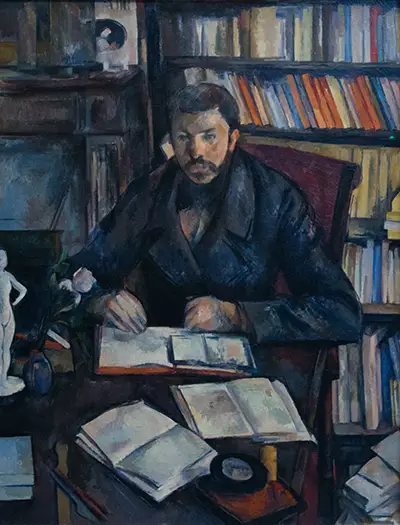Portrait of Gustave Geffroy was executed by Paul Cezanne in a c. 1895. The painting depicts Gustave Geffroy, a French novelist, art critic and journalist who was among the earliest historians of the 19th-century art movement Impressionism.
In 1969, the family of art collector Auguste Pellerin donated the portrait to the French state. It's on permanent exhibition at the Paris-based museum Musée d'Orsay. In March 1894, Gustave wrote an article in the Paris daily newspaper Le Journal praising the Cezanne's work. The eartist had not received enough praise at that time. In November 1894, Claude Monet, who was a mutual friend, arranged for the two to meet. However, the meeting didn't last long due to the artist's oft-noted erratic behaviour. Gustave continued writing positively of Cezanne and still believed he was great at telling the truth.
Cezanne expressed gratitude in letters to Gustave and chose to paint Gustave's portrait. The artist was not happy with the portrait and it was never finished; however, the painting became a famous retrospective work after he passed away. Cubist painters, from the early 20th century, were interested in the bookcase geometrical dimensions and perspective of wide table space in connection with the rest of the picturesque space. Gustave noted that Cezanne painted the whole canvas at once and left the hands and face for last, which were ultimately unfinished. This resulted in an image of a mysterious, opaque, threatening character. The fact that the painting is unfinished makes the image unique and striking.
Portrait of Gustave Geffroy is angular, with Gustave's figure centred as a triangular or pyramid figure. It's surrounded by shelves, figurines and books complementing and meeting on top of Gustave's profile. The various angles of perspective, especially with the books both on the table and in cases, have a zigzag effect on viewers, which creates movement within the picture. The various accents of orange seen on the table and in the bookcase show the contrast of the horizontal and vertical planes.
Portrait of Gustave Geffroy is regarded as a continuation of Paul Cezanne recurring theme: Human beings in their natural environment, unimposing and reserved, immersed in their daily tasks. The portrait was also compared to Edgar Degas' Portrait of Duranty, from which critics speculate the artist drew inspiration. The portrait is a unique union of the realistic concept of a piece of space, which is seen directly in its richness of detail and accidents. It has a powerful, probing, meticulous effort to adjust all that's seen in a consistent balanced structure that has its own attraction and vitality. The entire look is very contrived and natural.




